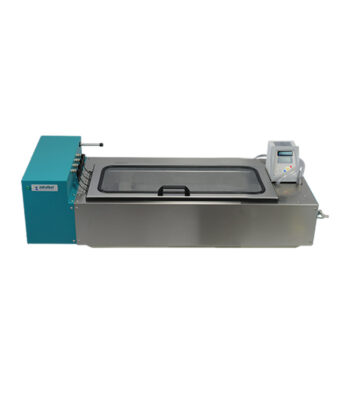Bitumen test methods
The bitumen we use in our roads and buildings is refined from carefully selected crude oils. A variety of different refining methods produce different kinds of bitumen and allow the manufacturer to produce specific characteristics in the bitumen. Producers often blend multiple crude oils together to produce consistent, high-quality bitumen that meets precise engineering specifications. (Source: Eurobitume website)
- Hard bitumen for use in road construction
- Cutback bitumen – a blend of bitumens with solvents such as kerosene
- Emulsions – stable solutions of bitumen in water
- Polymer-modified bitumens – mixtures of special bitumens with polymers such as thermoplastics or elastomers
Rheology
Rheology is the study of flow and deformation of materials under applied forces. Many asphalt binder and bitumen exhibit complex rheological properties, whose viscosity and viscoelasticity can vary depending upon the external conditions applied, such as stress, strain, timescale and temperature.
Softening temperature
Softening point determination by the ring-and-ball method is intended to evaluate the behavior of bituminous binders at elevated temperatures of use. The essence of the ring-and-ball method is that a small metal ball is pressed against a bitumen sample, piercing it to 25 mm with the temperature increased.
Cone penetration
The penetration depth of a bitumen sample with a standardized cone and a defined gravity force determine the hardness and the average service temperature. The cone penetration value is also used for the designation of a bitumen sort.
Stretchability under force and elastic force work
The stretchability (ductility) of a bitumen sample describes the ability of the bitumen to stretch into a thin thread at a constant rate in a water bath at 25 °C. The recorded value of the force is used for the qualitative distinction between unmodified bitumen and polymer-modified bitumen.
Brittleness temperature
The Fraas brittle point describes the breaking point of a bitumen film on a metal platelet at a defined temperature. During a controlled cooling process the platelet is repeatedly bent and straightened again.
Products for bitumen testing
-
 20-20670
20-20670Automatic Digital Penetrometer
Read more -
 20-20665
20-20665Digital Penetrometer iT 2018
Read more - NETZSCH
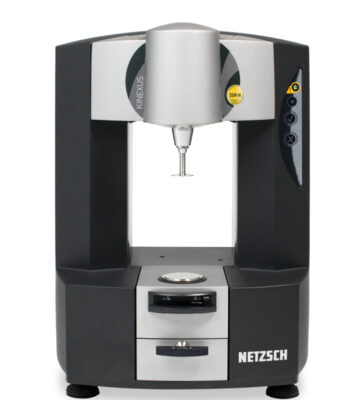 20-44401
20-44401Kinexus DSR Rheometer Plattform inkl. rSpace Software
Read more - NETZSCH
 20-44405B
20-44405BKinexus DSR-III Rheometer Bundle
Read more - NETZSCH
 20-44405
20-44405Kinexus DSR-III Rheometer Plattform inkl. rSpace Software
Read more - NETZSCH
 20-44404
20-44404Kinexus DSR+ Rheometer platform incl. rSpace software
Read more -
 20-22000
20-22000Automatic Ring and Ball Tester
Read more -
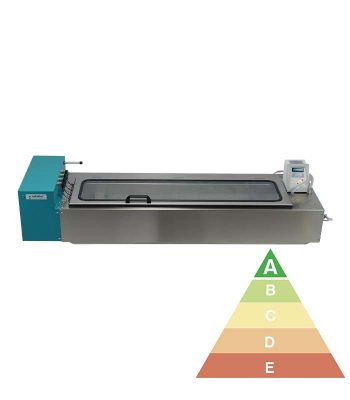 20-2346
20-2346Ductilometer 1000 mm digital
Read more -
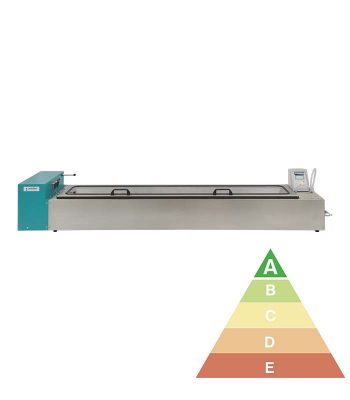 20-2356
20-2356Ductilometer 1500 mm digital
Read more -
 20-2050
20-2050Penetrometer
Read more -
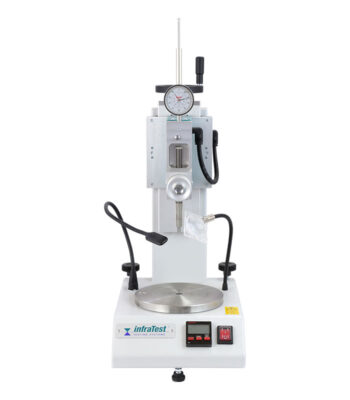 20-2060
20-2060Penetrometer with Timer Controller
Read more

